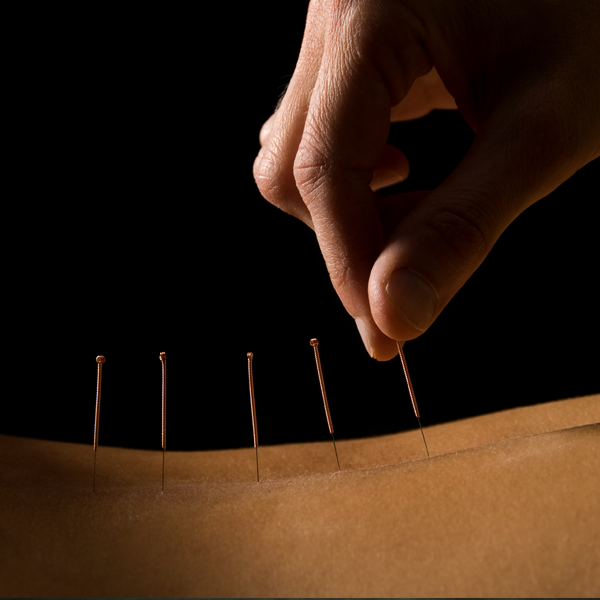Acupuncture
With it’s widespread acceptance, acupuncture has become a popular natural treatment in many Western countries and has become integrated into a number of NHS departments in Britain, most notably Pain departments. Western medical acupuncture is a ‘dry needling’ version of acupuncture but it is not based on TCM.
Acupuncture treatment involves the insertion of very fine needles, much finer than those for injections or for taking blood samples. The most commonly used needles by Christine are 0.18mm-0.20mm in diameter. These are inserted into acupuncture points on the surface of the body and each point has specific functions. A combination of points are selected to heal illness and reduce pain, thereby promoting health and a sense of wellness.
As any natural physical treatment, acupuncture has a cumulative effect. Although many patients may experience immediate improvements to their symptoms within the first treatment session, it takes the body time to heal and function appropriately. It is advised to be patient with your own body and give it time to benefit from the treatment and start healing itself.


There is a growing body of research studying the efficacy of acupuncture and how it works. This is highlighted by the fact that currently there is more research being conducted on acupuncture than for nursing and physiotherapy.
Acupuncture has been found to have general effects on the nervous system, which in turn demonstrates:
- The stimulation of endocrine glands, activating systemic effects
- An alteration in the secretion of neurotransmitters and neurohormones and changes in the regulation of blood flow, centrally and peripherally
- Alterations in immune functions
Acupuncture therefore has a sophisticated and diverse impact on various systems in the body, influencing the physiological processes of hormones and the immune system.
Acupuncture treatments may include other affiliated therapies. For exmple auricular acupuncture/ pressure (ear acupuncture/ pressure), electro-acupuncture, acupressure and body work, cupping (and sliding cupping), and therapeutic heat-lamp.
Prior to the first appointment, a telephone call takes place to discuss your condition and address any queries you may have and discuss how acupuncture and/ or Chinese herbal medicine may help you and you and your condition.
Associated Treatments
Christine is also able to offer associated treatments. To find out more please click on the links below. She will discuss whether these are appropriate with you at your consultation.
Moxibustion
A therapy using an herb that is used:
- indirectly
- with acupuncture needles
- (rarely in the West) burnt directly on the skin.
The treatment warms regions of the body and acupoints to stimulate circulation, inducing a smoother flow of qi and blood. It is especially effective in the treatment of conditions with ‘cold’ and ‘dampness’, such as osteoarthritis and other external and internal conditions. It is now also commonly known in the West as a treatment to turn breech babies.
Auriculotherapy
Is ear acupuncture using needles or ear press tacs or ear acupressure using ear seeds. It is often used in conjunction with body / regular acupuncture, but it may also be used as a ‘stand alone’ treatment.
A microsystem of the body is mapped on the ear, hence by diagnosing with and treating the ears, various conditions of the body may be treated. There are over 90 frequently used points on each ear, which is related to specific parts of the body.
Auricular acupuncture is used extensively for psychological issues, including anxiety and depression and PTSD. And particularly for helping people deal with addictions, such as in drug and alcohol detox centres.
Acupressure
Is a TCM bodywork technique based on the same ideas and principles as acupuncture.
It involves placing physical pressure, by hand, elbow, or with the aid of various devices, on different acupressure points on the surface of the body (which may be far /distant from the symptom, but related by the channel system) to bring about relief through greater balance and circulation of energies in the body.
It affects and balances the energetic system of the body in order to treat physical and mental-emotional conditions. In modern day, acupressure wristbands may help to relieve the symptoms of motion sickness and other forms of nausea.
Electroacupuncture
It is an electrical device which applies small electrical currents to acupuncture needles at specific points on the body.
It works as regular acupuncture, but it increases the stimulation and effects of the acupuncture needles, thus helping to move the vital energy in the body.
As with traditional acupuncture, needles are inserted on specific points along the body.
The needles are then attached with small clips to an electroacupuncture device which generates continuous electric pulses. These devices are used to adjust the frequency and intensity of the impulse being delivered, depending on the condition being treated.
Electroacupuncture uses two needles at a time for the impulses to pass from one needle to the other. Several pairs of needles may be stimulated simultaneously, usually for approximately 20-30 minutes at a time.
It has been effectively used as a form of anaesthesia; for acute and chronic pain and a reliever for muscle spasms; as well as a treatment for neurological (nerve) disorders and weight management.
Studies have examined the role of electro acupuncture in treating skin conditions such as acne; as well as renal colic; and acute nausea caused by cancer medications.
There is also some evidence that electrical stimulation of acupuncture points activates the endorphin system, which may lower blood pressure and reduce heart disease. The electric charge is very small and can be adjusted by the practitioner for the comfort of the patient.
Cupping
Glass or plastic cups are placed on the skin with suction, which is believed to influence the flow of energy and blood in the body.
Cupping is a safe, non-invasive technique, which disperses and moves qi by exerting suction and pressure.
Cupping disperses and moves qi (the body’s vital internal energy), stimulates blood circulation, and removes blockages and toxins by exerting suction and pressure on the surface of the skin.
It is used to treat respiratory conditions, such as lung infections and colds. It also treats problems in the internal organs because it is believed that the suction disperses and energizes the qi that has become blocked and stagnated in the relevant organs. It is also used to treat muscle and joint pain and spasms.
Conditions which Acupuncture may treat:
Gastrointestinal conditions
- Abdominal pain
- Colitis
- Constapation
- Diarrhoea
- Gastric
- IBS
- Indigestion / Heartburn
- Nausea
- Vomiting
- Reflux
Other conditions
- Respiratory
- Cardiovascular
- Addictions
- Weight managment
